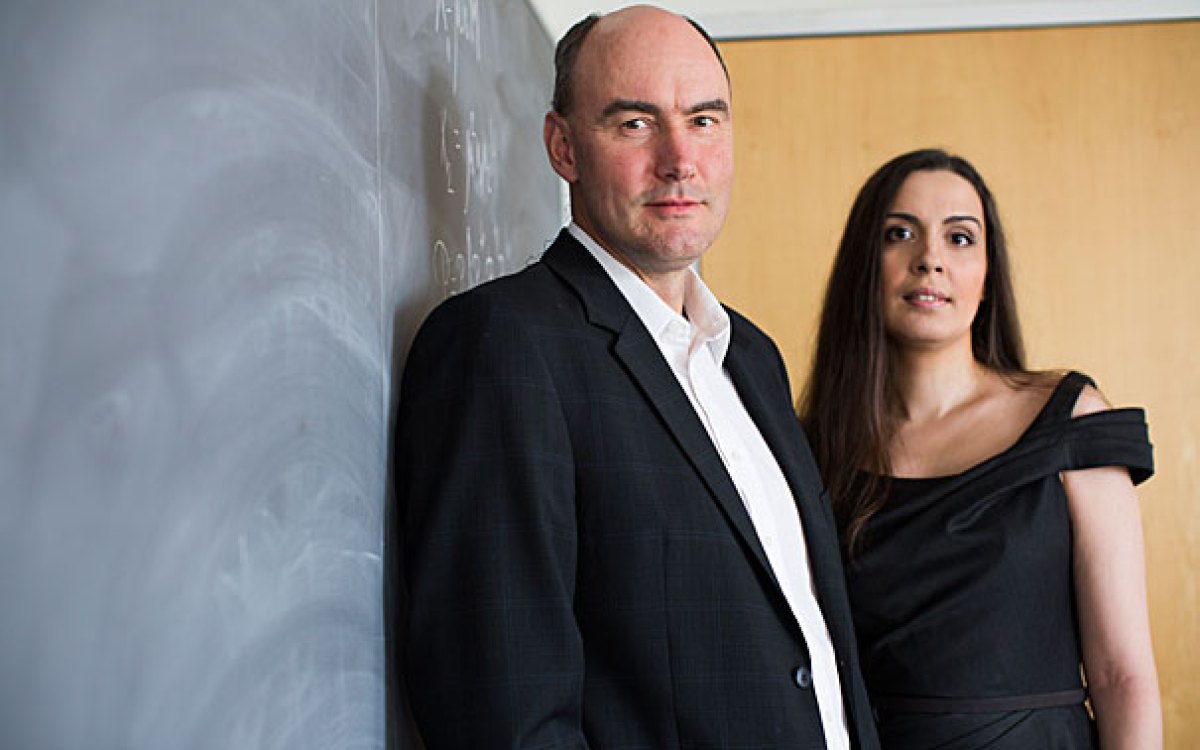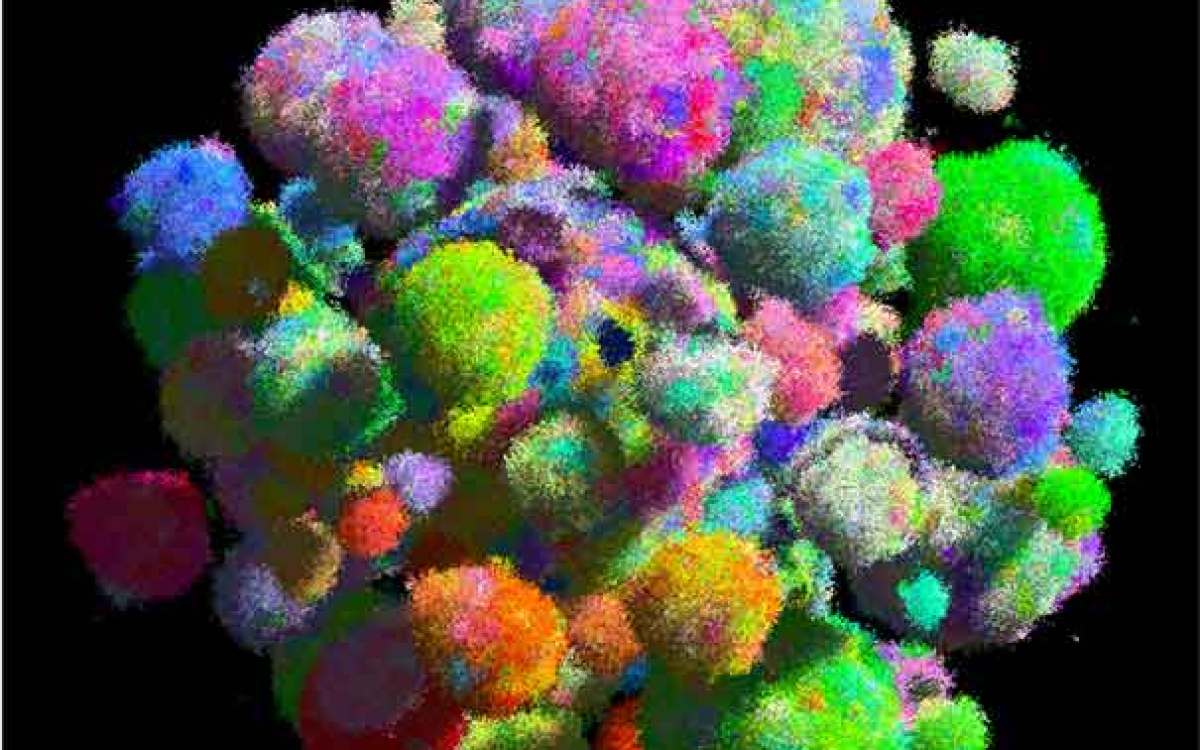
“For the first time we see a light at the end of the tunnel,” says Professor Martin Nowak.
Photo by Olivia Falcigno
Study signals a limit to cancer’s complexity
Findings on driver mutations may prove advance for targeted therapy
Discoveries in cancer research have included everything from genes that can transform healthy cells into tumor cells to advances related to tumor immunology, but those breakthroughs have often led to new complexities, leaving researchers with additional questions.
Now, the limits of those complexities may be coming into view.
Evidence uncovered by a team of researchers that included Martin Nowak, a professor of mathematics and of biology, suggests that, within individual patients, the majority of driver mutations — genetic mutations that help create or sustain cancerous cells — are shared by both the primary tumor and metastases. The study was described in a paper published last month in Science.
That finding is critical because it creates hope for targeted combination therapy against metastatic cancer, said Nowak, also the director of the Program for Evolutionary Dynamics. Rather than trying to combat the effects of dozens of different genes, clinicians might only have to design treatments for a handful of cancer drivers for an individual patient, he said.
“Whenever cells divide in the body, mutations occur,” Nowak said. “Most of those mutations don’t cause problems, but some mutations are steps toward cancer. We call them drivers. If we want to use precision medicine against the disease, we need to know what those driver mutations are.
“One outcome of our study could have been that we found different driver mutations in different metastases,” he continued. “That would have been a real problem, because the hope is that, in a few decades from now, precision medicine will allow a doctor to identify those driver mutations in a patient and then target them using specific treatments. But if they were different for every metastasis, that would be impossible.”
Though personalized cancer therapies are still years away, the study offers an important signal that they might one day be reality, Nowak said.
“The finding gives us hope that such treatment is possible. Because if metastases share the same driver mutations, then if we target those mutations, it may be possible to control metastatic disease.”
A shared set of driver genes, Nowak added, would also make diagnosis far easier. Rather than having to identify specific mutations in every metastases of a patient, doctors would need to perform just a single biopsy of the primary tumor.
To begin to understand which mutations are found in metastases, the researchers — including Johannes Reiter of Stanford University, Bert Vogelstein of Johns Hopkins University, and Christine Iacobuzio-Donahue of the Memorial Sloan Kettering Cancer Center — had to obtain samples from metastatic cancer patients before they were treated for the disease.
“Most cancer studies analyze the primary tumor,” Reiter said. “There are not many cases where we have genetic information from the primary tumor and several metastases and moreover in patients that have not been treated with chemotherapy. Such treatment could induce many additional mutations.”
The team found 20 patients who matched the criteria, Reiter said, and analyzed genetic sequencing data from 76 metastases in those patients. The cancers were breast, colorectal, endometrial, gastric, lung, melanoma, pancreatic, and prostate.
Nowak cautioned that researchers still face challenges in designing drugs to target driver mutations and in overcoming challenges related to drug resistance in cancer cells.
“There are many challenges that remain,” Nowak said. “But in some sense now, hope is possible. There is hope because it appears there is a limit to cancer’s complexity … for the first time we see a light at the end of the tunnel.”
This research was supported by funding from the National Institutes of Health, the Lustgarten Foundation for Pancreatic Cancer Research, the Sol Goldman Pancreatic Cancer Research Center, the Virginia and D. K. Ludwig Fund for Cancer Research, an Erwin Schrödinger Fellowship, a Landry Cancer Biology Fellowship, and the Office of Naval Research.







